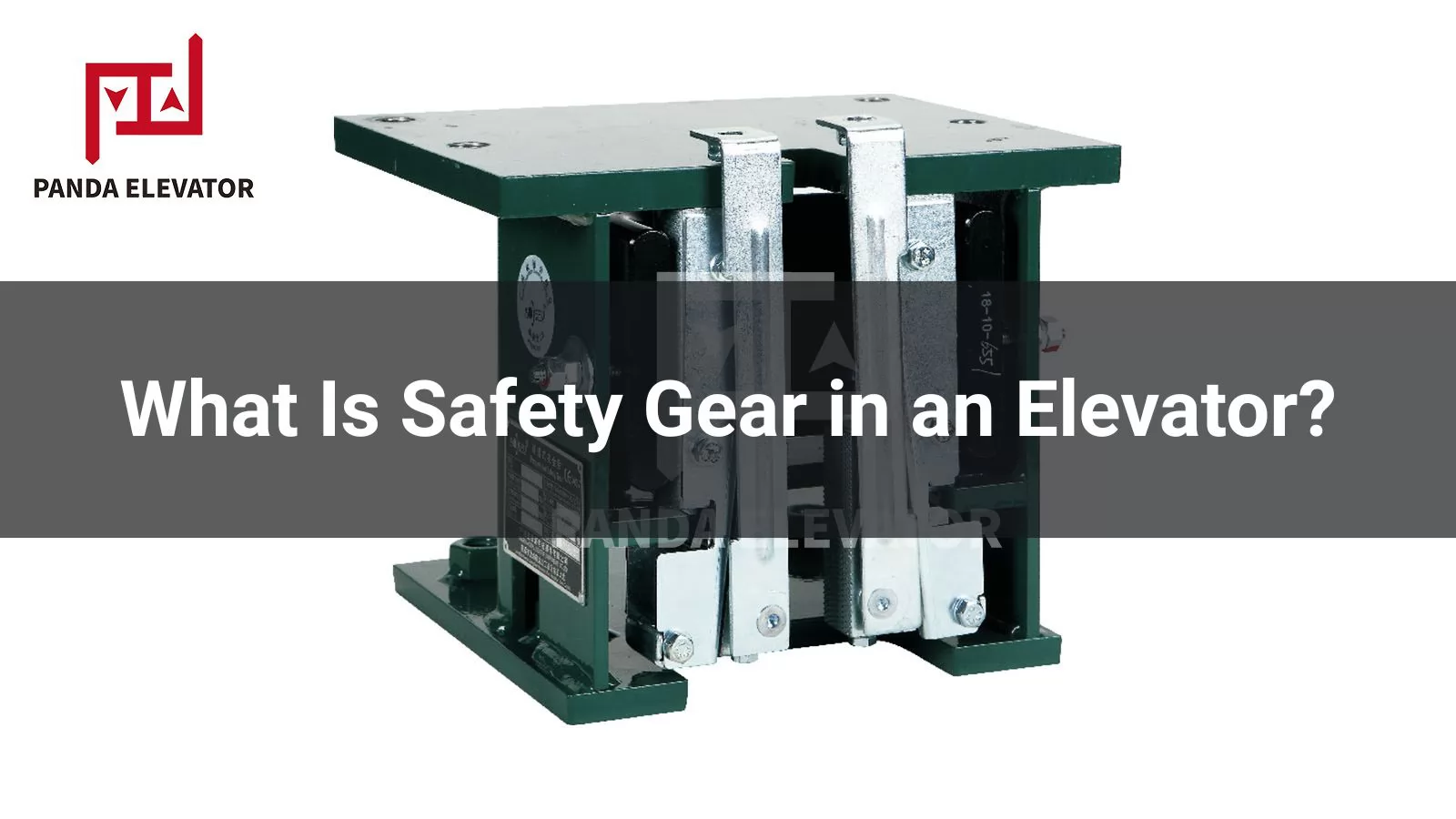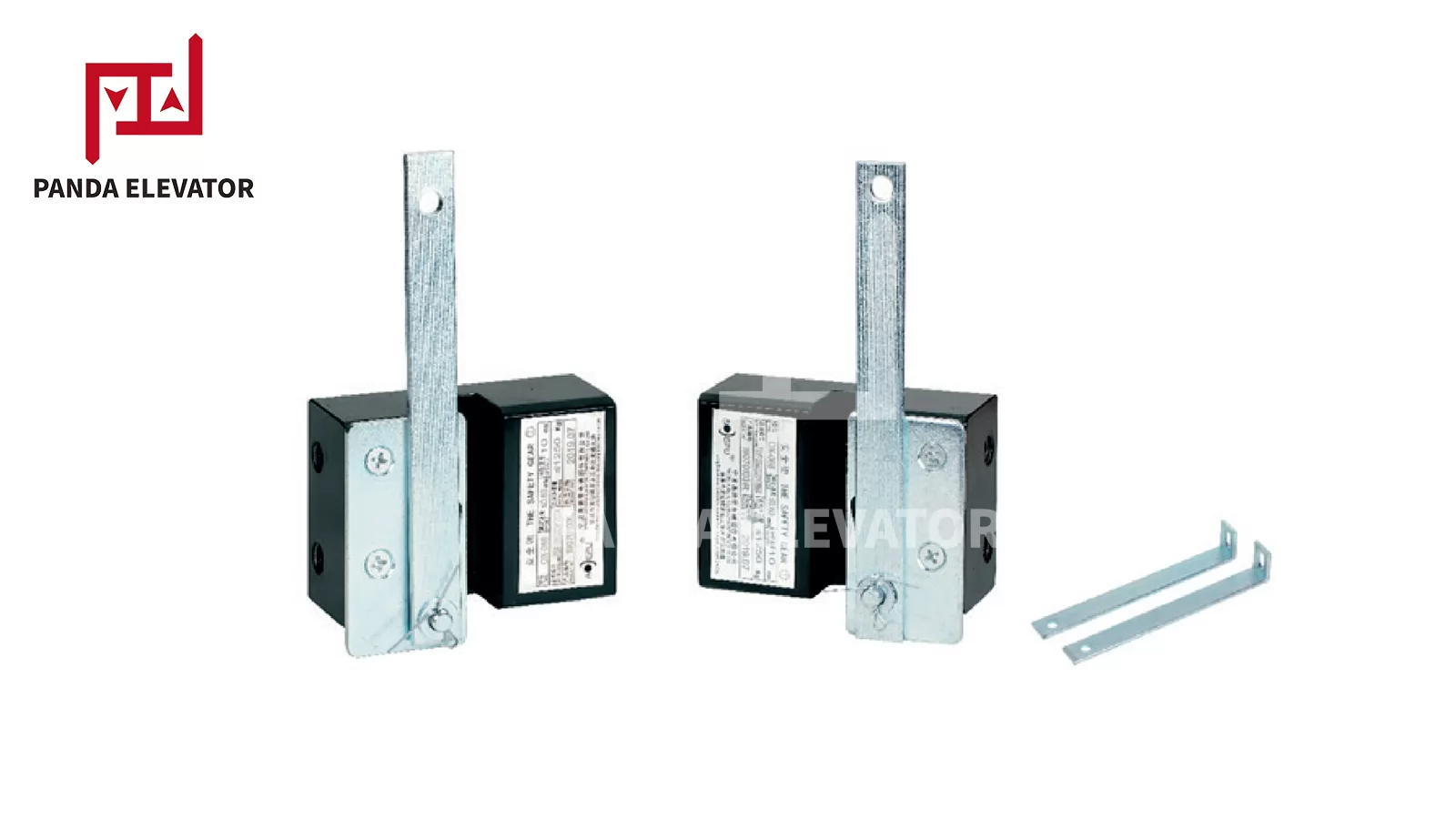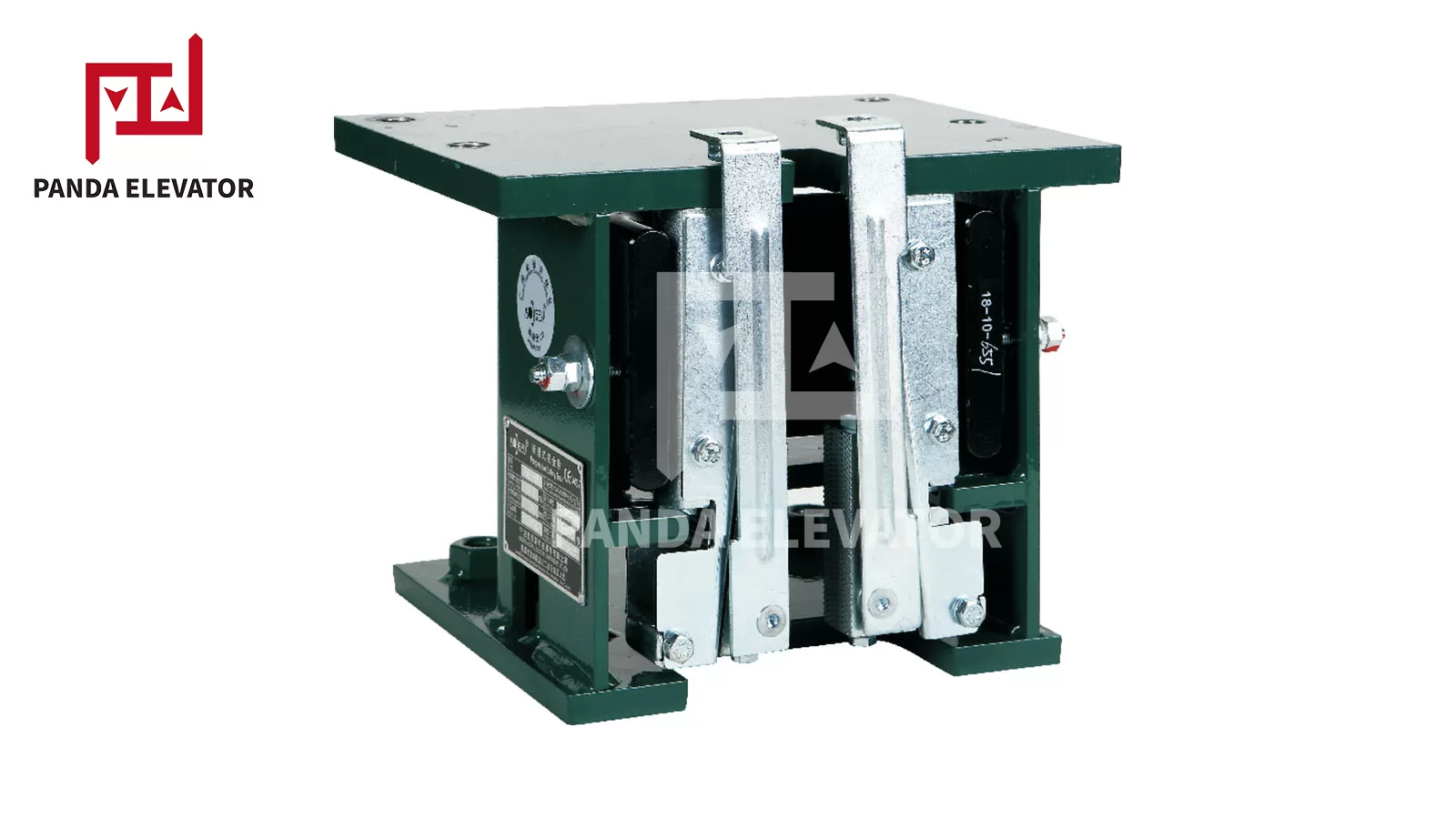

Elevator safety gear is the mechanical backup that prevents an elevator car from uncontrolled movement if something goes wrong—most commonly when the car overruns its rated speed or there is a failure in the suspension system. Activated by an overspeed governor, safety gear physically grips the guide rails to stop and hold the car. Although it rarely operates during normal service, it is one of the most critical life-safety systems in any lift installation.
Safety gear (sometimes called a safetycatch or elevator governor-activated safety device) is a mechanical assembly mounted to the elevator car frame. Its primary role is not to act during normal braking, but to react when the speed or suspension condition exceeds safe limits. Upon activation, it applies a clamping or braking action directly to the elevator guide rails and brings the car to a controlled stop and then holds it securely until service personnel intervene.
Because safety gear acts directly on the guide rails and is intended to arrest potentially catastrophic motion, it is designed and tested to very high safety margins. It complements other safety systems—traction brakes, overspeed governors, buffers, safety circuits and door interlocks—to create layered protection for passengers and goods.
Note: safety gear is a last-resort device. Many modern systems are designed so that the governor and other safety circuits will attempt to stop the car using normal braking systems first; safety gear engages if those measures fail or if an extreme event occurs.

Instantaneous safety gear is engineered to arrest motion almost immediately. Typical designs include wedge-type clamps or roller-jamming mechanisms that act within milliseconds. These devices are valuable when stopping distance must be extremely short—e.g., in low-speed hoists or installations where long skid distances cannot be tolerated.
Characteristics:

Progressive safety gear is designed to apply braking force gradually, permitting a controlled slip or deceleration distance rather than a sudden clamp. The progressive action spreads the stopping force over a longer distance, reducing shock to passengers and reducing the instantaneous load on elevator components.
Characteristics:
Although models vary by manufacturer, most safety gear assemblies share these elements:
Choosing the right safety gear is about balancing three goals:
Consequently, low-speed freight lifts or simple hoists may favour instantaneous gear for minimal stopping distance, while modern passenger elevators—especially high-speed units—almost always use progressive gear to preserve ride safety and comfort.
Safety gear design, testing and installation are governed by national and international elevator codes (for example, EN 81 in Europe, ASME A17.1/CSA B44 in North America, and equivalent national regulations elsewhere). These codes set requirements for:
Always check the applicable local code and the manufacturer’s recommendations; statutory intervals for inspection and testing vary by jurisdiction and by building usage (residential, commercial, hospital, etc.).
Although safety gear rarely operates in normal service, it must be inspected and function-tested regularly to ensure readiness. Typical maintenance tasks include:
Common failure modes include linkage corrosion or seizure, worn or glazed clamping faces (leading to poor grip), wrong spring or damper calibration, and false trips caused by governor maladjustment. Any evidence of improper operation should result in immediate removal from service and professional inspection.
When modernizing an older elevator—particularly one being upgraded to run at higher speeds or with a new governor—safety gear often requires replacement or re-engineering. Key retrofit considerations include:
When procuring safety gear or commissioning work, evaluate suppliers against these criteria:
Scenario A — high-rise passenger elevator: A progressive safety gear is preferable to avoid subjecting passengers to high g-forces if a governor trips at speed. The gradual deceleration reduces injury risk and minimizes cargo damage.
Scenario B — goods hoist in an industrial plant: If stopping distance is critical and speeds are low, an instantaneous wedge device may be chosen for the minimal travel required to arrest the car.
These scenarios show that safety gear selection is not “one size fits all” — it must be matched to speed, load types, usage patterns and local regulatory limits.
The overspeed governor is the primary trigger: when it detects speed beyond the preset safe limit or when a suspension failure occurs, it actuates the linkage that releases the safety gear. Some systems also allow manual or test activation for maintenance checks.
No. Safety gear is a supplemental, emergency device. Ordinary traction or service brakes handle normal stopping and holding during daily operation. Safety gear is designed to operate only under abnormal or emergency conditions.
Inspection intervals depend on local codes and building usage. Many maintenance regimes include at least an annual functional check plus visual inspections with each scheduled maintenance visit. High-traffic or critical-use installations (hospitals, public transport hubs) may require more frequent testing.
If a safety gear trip occurs, do not attempt to free the car yourself. Follow emergency procedures: record occupant safety, call certified elevator technicians, post "out of service" notices, and arrange a full inspection and re-certification before returning the elevator to service.
Signs include visible wear or deformation on wedges/rollers, frequent false trips, difficulty in testing, loud or unusual noises during a test trip, or any corrosion and seized linkages. If wear measurements exceed manufacturer limits, replace the component immediately.
Safety gear in elevators is a critical, legally required mechanical safeguard that arrests uncontrolled car movement during overspeed events or suspension failures. The correct type and design—instantaneous or progressive—depend on speed, use case, and code constraints. Regular inspection, functional testing, and working with reputable suppliers and maintainers are the practical steps building owners and operators must take to keep elevators safe and compliant.



